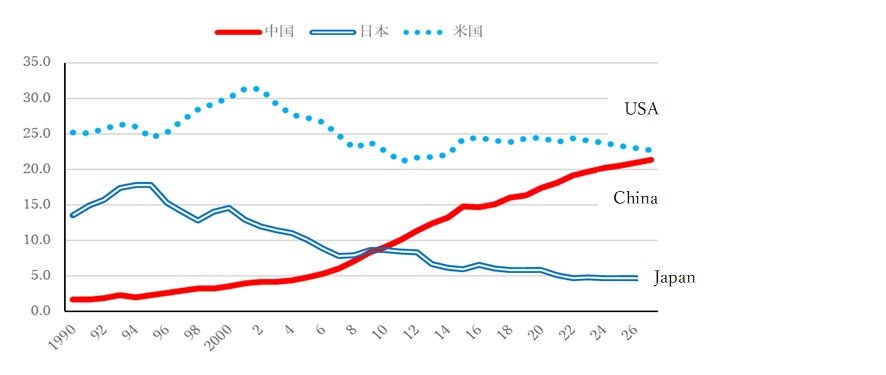Other International Exchange 2022.11.11
A New Framework for Global Order Formation
Destabilization of the Global Order Caused by the U.S.-China Conflict
(1) Decline of U.S. Dominance and the Rise of China
The foundation of the postwar global order was the strong leadership of the United States and international trust in its contribution to the formation of a stable order. Since the beginning of the 21st century, that leadership and trust have begun to waver. The decline of the U.S. share in the global economy and its retreat from taking an active role in stabilizing the global order have had a negative impact on global order formation.
One of the key elements of leadership in global order formation is the size of the economy: according to the IMF's World Economic Outlook (April 2022) database, the share of U.S. GDP in the global total has plummeted from 31.3% in 2001 to 22.7% in 2010 (See Figure). During the same period, China's share of GDP increased sharply from 3.9% in 2001 to 9.1% in 2010. With the U.S. share at 24.5% and China's at 17.4% in 2020, U.S. GDP already losing its overwhelming advantage. The two countries are expected to be almost equal with each other with a share of just over 20% in 2030. As China's economic power has expanded, its military power has also grown. In the 2010s it has taken a more hawkish stance toward the outside world. Consequently the United States began to view China as a threat.
Figure: Trends in Global GDP Share of Japan, the U.S., and China

(Source: IMF World Economic Outlook, April 2022)
